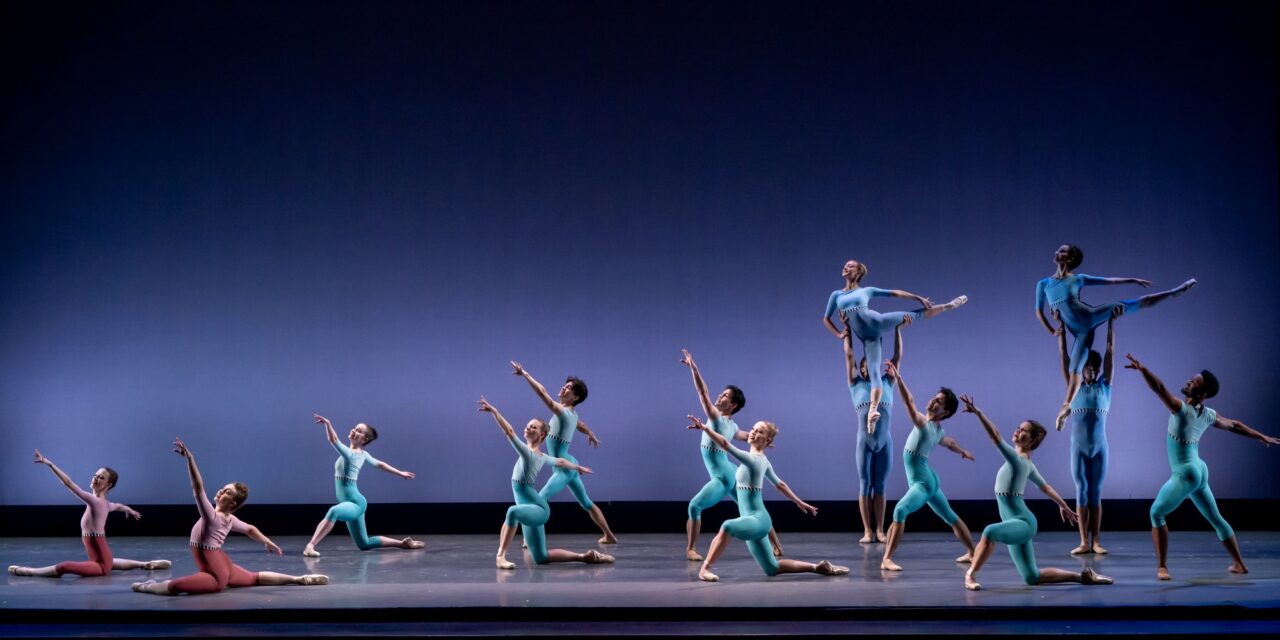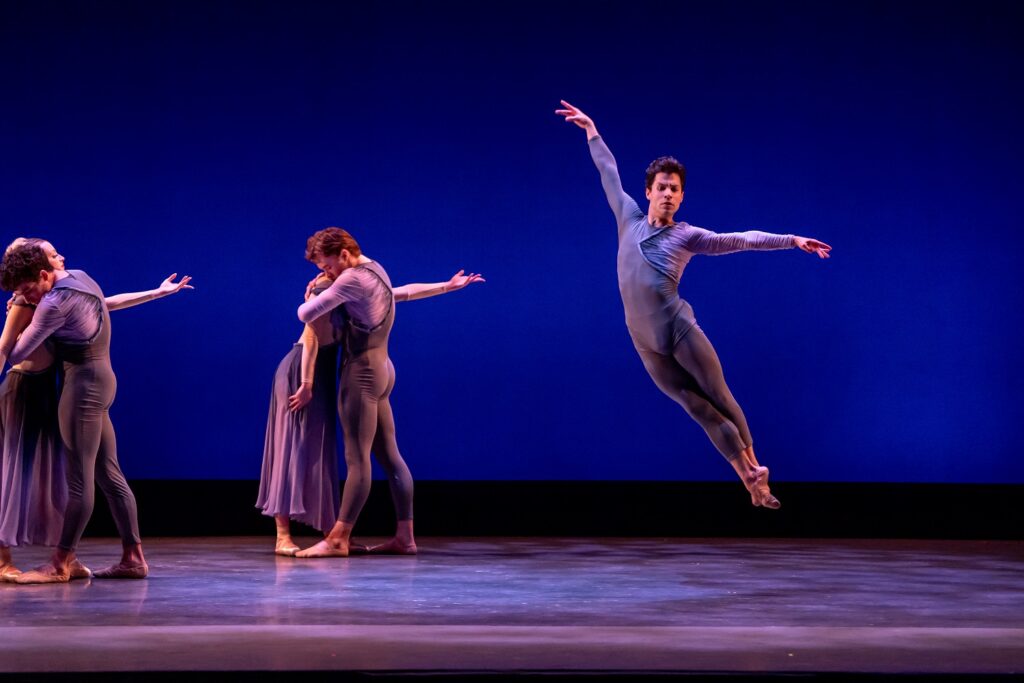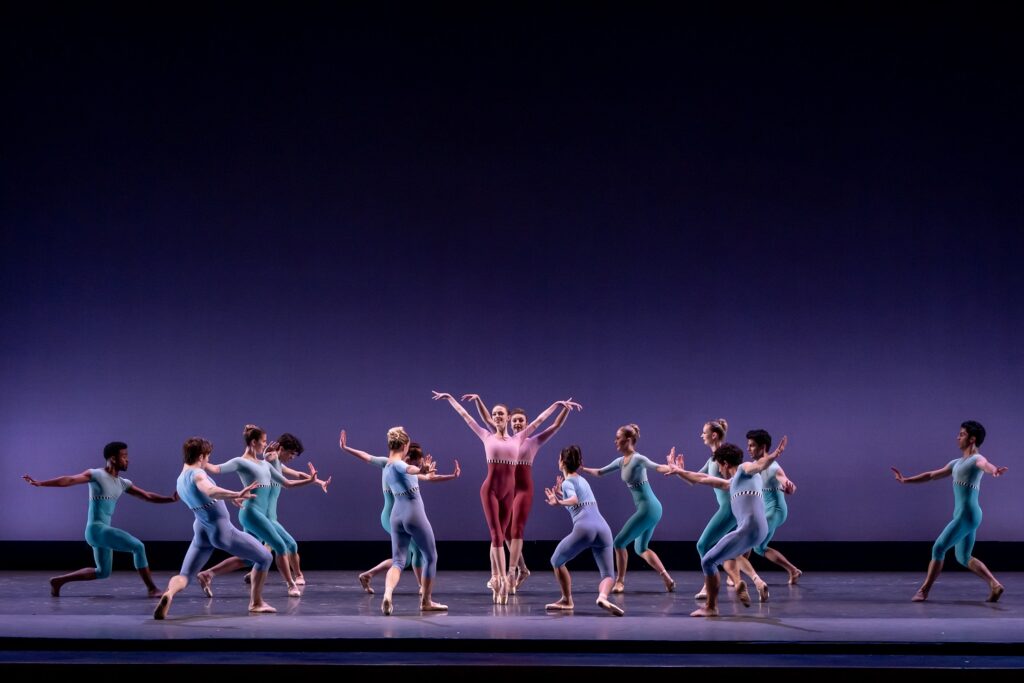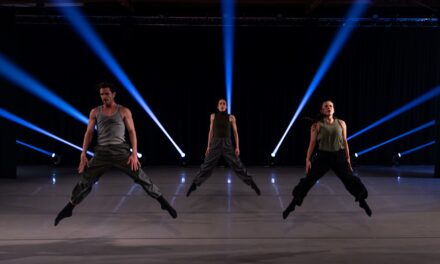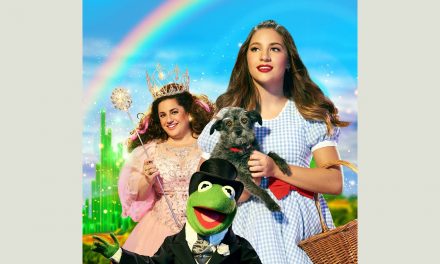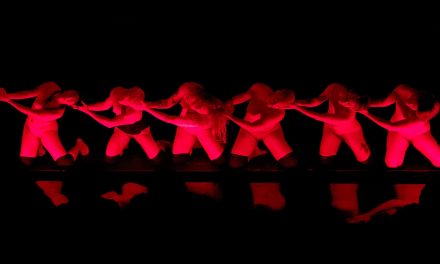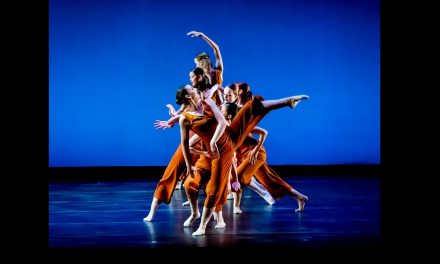On Friday March 22, 2024, BroadStage presented L.A. Ballets’ Next Step. Melissa Barak, Artistic Director, most certainly put her signature on the company after a year of triage to test its balance for just the right ingredients. With time to settle in, she appears to be swapping a bit of the classic Balanchine Repertoire, for a more contemporary sensibility. Something that, if successful, will mirror Los Angeles’ untamed inclinations.
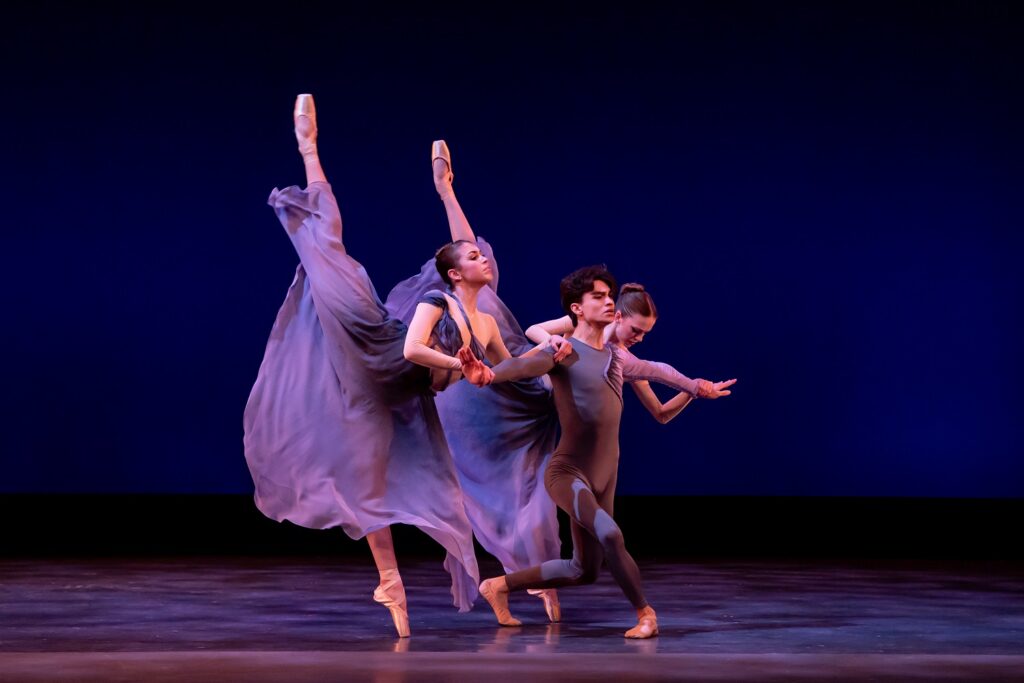
Los Angeles Ballet – Aviva Gelfer-Mundl, Jacob Soltero, and Cassidy Cocke in Justin Peck’s “Belles-Lettres” – Photo by Cheryl Mann.
The evening began with New York City Ballet’s Justin Peck, and his complicated lyricism and technically difficult choreography for Belles-Lettres, often countering the music by César Franck (Solo de piano avec accompagnement de quintette à cordes). Peck’s movements push the dancers to perform at breakneck speed, with nary a moment to breath. Having trained under the illustrious Balanchine umbrella, Peck appears to converge complex patterns, lifts, turns, leaps, with a lyric denouement. These challenges were executed and clearly met by Belles-Lettres’ four couples; Sarah Ashley Chicola and Santiago Paniagua, Cassidy Cocke and Simon Costello, Lilly Leech and Jacob Soltero, Aviva Gelfer-Mundl and Jonas Tutaj.
The soloist and odd man out, Marcos Ramirez, did a remarkable job as the glue that pulled the corps together. Ramirez put his strength and fire into his featured roll, originally done by NYCB’s Anthony Huxley in 2014 when the piece was premiered. Ramirez’ clean tours, and technical prowess, was marked by endurance and an ability to tie the pieces together leaving the audience in rapt attention for fear of missing something.
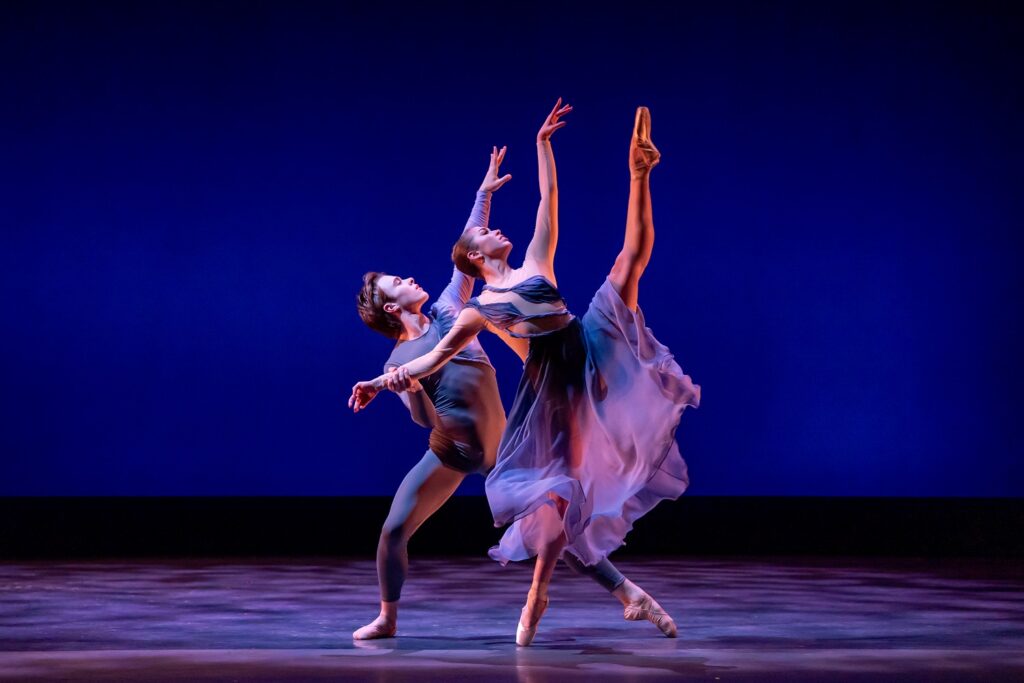
Los Angeles Ballet – Aviva Gelfer-Mundl and Jonas Tutaj in Justin Peck’s “Belles-Lettres” – Photo by Cheryl Mann.
The captivating costumes, fashioned by designer, Chloée O’Hayon Crosby, shown in graduated creams, purples and blues, cascading in the air as the dancers moved between romantic lines and explosive twists and turns. The original lighting by Mark Stanley took on a subtle glow as it followed the action. Unfortunately, the lifts and dips gave little time to register what had just happened. The young Peck hardly allowed the breadth that was anywhere near equal to his mentor’s love letter to his ballerina/wife Tanaquil Le Clercq in La Valse. When that was seen, it took ones breath away. Clearly Peck’s youthful exuberance gave little time to communicate romance, nuance, subtlety and yes, lyricism.
The next piece, Frank Bridge Variations, was created by the beloved choreographer and creative wizard, Hans van Manen. Its music composer, Benjamin Britten was mentored at age 11 when Frank Bridge discovered him as a child prodigy in 1924.
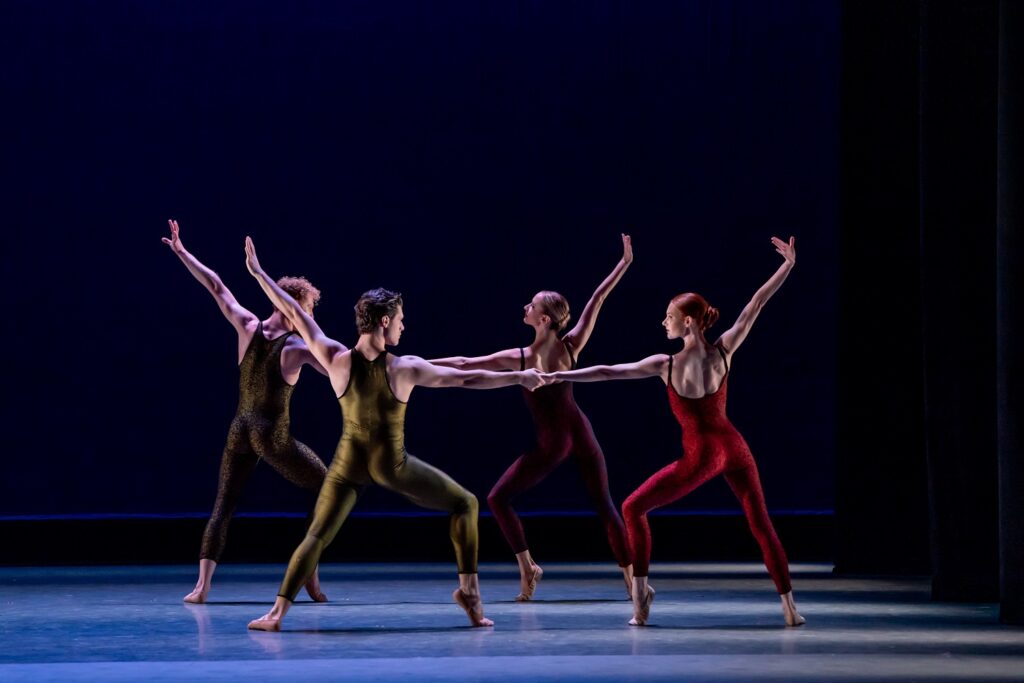
Los Angeles Ballet – Frank Bridge Variations, Dancers L-R Marco Biella, Jake Ray, Brigitte Edwards, Lilly Fife in “Frank Bridge Variations” by Hans van Manen – Photo by Cheryl Mann.
This piece shows van Manen’s ironic stylization, musicality and subtle sense of humor. When performed by his own mature company, it shows the effortlessness and his Ironic playful and delicious sense of humor. Van Manen’s love for movement is delivered as the music and connectedness shows his remarkable musicality, design and maturity necessary to deliver his “Frank Bridge Variation.” While LA ballet’s dancers certainly delivered the technical, it was not as clear about the underbelly, the subtext of the piece. Perhaps because of fear to deliver this playful genius’ style, or a kind of need for perfection, it was missing elements of connection not only to the piece but to each other.
And as a final piece, Cylindrical Forces by Melissa Barak, appears to be a series of musical and dance modulations, creating anticipation of what is to come. Her choice to have original music written by the award-winning Kris Bowers created lush musical patterns with continuous growth without diminishment. It was unencumbered by subtlety and managed to continuously telegraph where it was going. The dancers Sarah-Ashley Chicola, Sara Renda, Jonas Tutaj, Santiago Paniagua, Cassidy Cocke, Cleo Taneja, Natalia Burns, Poppy Coleman, Anna Jacobs, Hannah Keene, Simon Costello, Cesar Ramirez Castellano, Marcos Ramirez, and Jacob Soltero worked well in Barak’s contemporary ballet vernacular. The costumes by Holly Hynes were muted pastel Empire-style body suits for the women and full body suits for the men. The spring colors brightened the stage, yet Hynes designs challenged even the best of some of the dancers’ bodies.
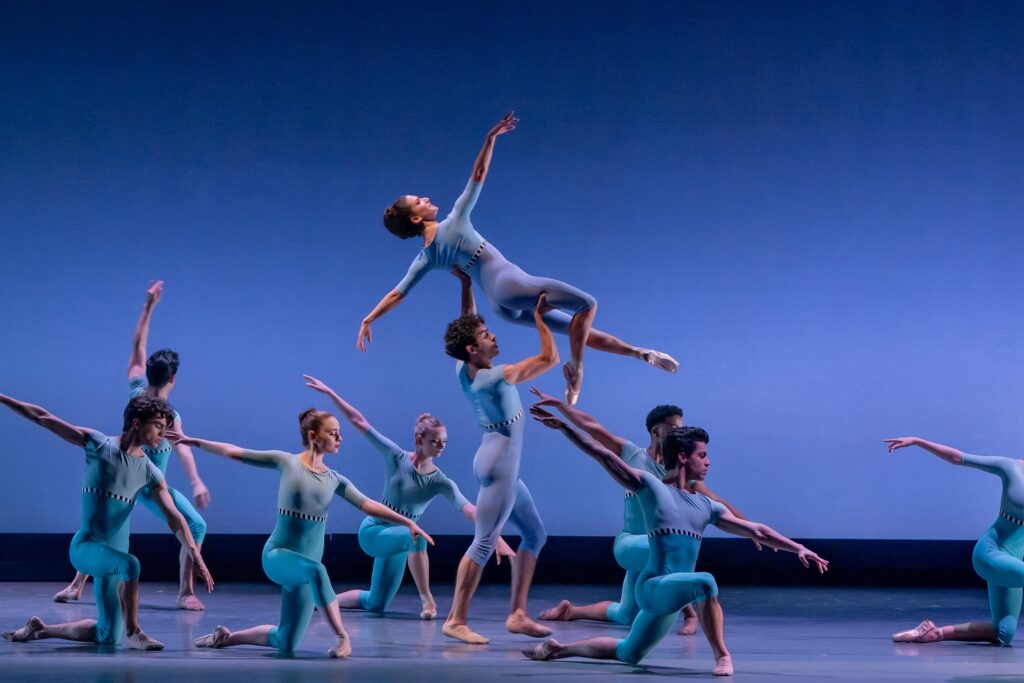
Los Angeles Ballet – Santiago Paniagua and Sara Renda with ensemble in Melissa Barak’s “Cylindrical Forces” – Photo by Cheryl Mann.
Barak’s piece combined a symphony of hues in choreography, music and color, then conceptually sorted the colors splitting them into various groups with large corps pieces, pas de quatre, and pas de deux. Cylindrical Forces is a good start definitely needing the excitement of an audience, however, it appears to be a work in progress to continue to mine the potentiality and possibilities of Barak’s ideas.
This evening marked the transition and courage of Melissa Barak and her company to tackle difficult pieces and was an important exposure for the hungry L.A. Audiences. It will take time and maturity to satisfy and carve out a place in a fickle city like Los Angeles. Congratulations and keep going. L.A. Ballet is needed in our city.
For more information about Los Angeles Ballet, please visit their website.
To learn more about BroadStage’s performance season, please visit their website.
Written by Joanne DiVito for LA Dance Chronicle.
Featured image: Los Angeles Ballet in Melissa Barak’s Cylindrical Forces – Photo by Cheryl Mann.

